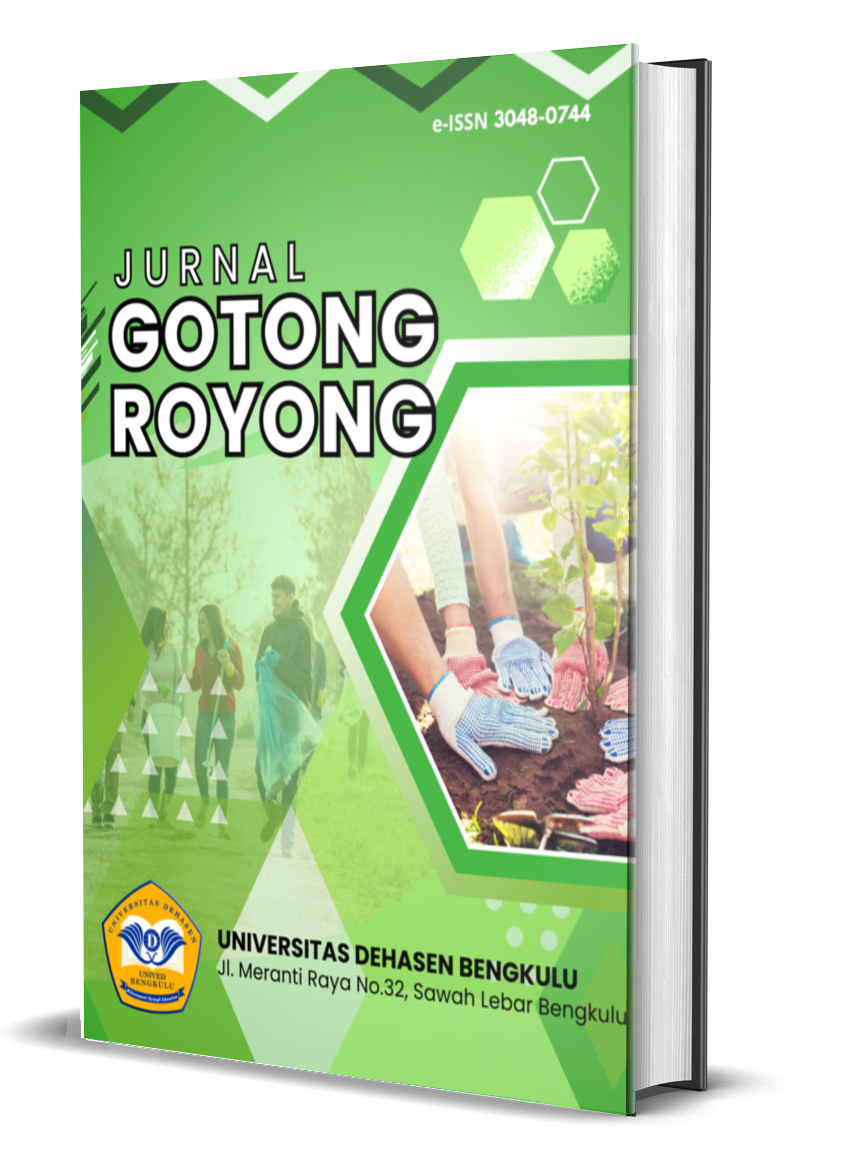Memanfaatkan Serat Tali Dari Daun Lidah Mertua Dan Botol Plastik Menjadi Kerajinan Keranjang Air Mineral
Abstract
Waste management sometimes does not get serious attention, awareness of the importance of the environment is still low, so that environmental pollution begins to occur and has a bad impact on the surrounding environment. Utilization and processing are adjusted to the type of waste. Inorganic waste can be recycled into craft products that can be used such as plastic bottles. The KKN-T community service program is carried out by providing education through socialization of waste sorting and training activities for making crafts from snake tongue fiber and used plastic bottles. Sorting 3R waste to residents of RT.41, especially inorganic waste, namely plastic bottles, jars and cardboard by direct exposure, providing information from leaflets, as well as information on its economic value. Furthermore, conducting training in processing inorganic waste into crafts in the form of mineral water baskets. Utilization of snake tongue fiber and plastic bottles into mineral water basket crafts can be an alternative for processing inorganic waste that has economic value and is environmentally friendly. This community service can be an inspiration for residents of RT.41 to develop other craft products that utilize natural materials and inorganic waste. In addition, the high economic value of the craft products produced requires further action that can increase public awareness in implementing the 3R principle.
Downloads
References
2. Anwar, N. 2008. Apa yang akan Kau LakukanTerhadapSampah?. Bandung: PT Elisa Surya Dwitama.
3. BPS Kota Bengkulu. 2024. Kecamatan Selebar dalam Angka.
4. Lawa, Jonathan I.J., Mangangka, I. R., Riogilang, H. 2021. Perencanaan Tempat Pegolahan Sampah 3R di Kecamatan Mapangat Kota Manado. Jurnal Tekno 19(78): 77-89.
5. Mintarsih, Tuti Hendrawati. 2015. RangkaianHlh 2018 Dialog PenangananSampahPlastik,.
6. (online). http://www.menlh.go.id/rangkaian-hlh2015dialog-penanganan-sampah
7. plastik/, diakses pada tanggal 10 November 2022.
8. Narbuko. Cholid dan Abu Achmadi, 2004. MetodologiPenelitian, Jakarta. Bumi Aksara.
9. Nazir, Moh. 1988. Metode Penelitian. Jakarta. Penerbit Ghalia Indonesia.
10. Pedoman Umum 3R dalamhttp://www.sanitasi.net/pedoman-umum-3rreduce-reuserecycle.html, diakses pada tanggal 10 November 2022
11. Subekti, S. (2010). PengelolaanSampah Rumah Tangga 3R Berbasis Masyarakat. Prosiding Seminar Nasional Sains dan Teknologi Vol 1 No 1, 3
Copyright (c) 2025 Supri Yadi, Pio Rahmat Saputra, Indra Lesmana Saputra, Agus Septiawan, Kevin Syaputra, Andwini Prasetya, Hesti Nur’aini, Herri Fariadi

This work is licensed under a Creative Commons Attribution-ShareAlike 4.0 International License.
An author who publishes in the Jurnal Gotong Royong agrees to the following terms:
Author retains the copyright and grants the journal the right of first publication of the work simultaneously licensed under the Creative Commons Attribution-ShareAlike 4.0 License that allows others to share the work with an acknowledgement of the work's authorship and initial publication in this journal
Submission of a manuscript implies that the submitted work has not been published before (except as part of a thesis or report, or abstract); that it is not under consideration for publication elsewhere; that its publication has been approved by all co-authors. If and when the manuscript is accepted for publication, the author(s) still hold the copyright and retain publishing rights without restrictions. For the new invention, authors are suggested to manage its patent before published. The license type is CC-BY-SA 4.0.
Jurnal Gotong Royong
is licensed under a Creative Commons Attribution-ShareAlike 4.0 International License.










